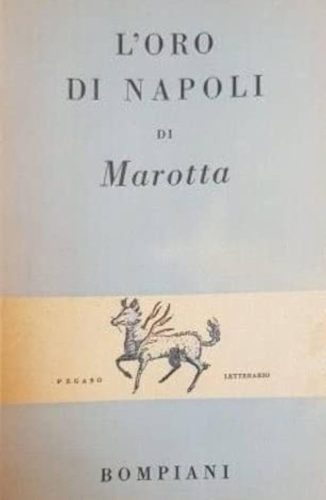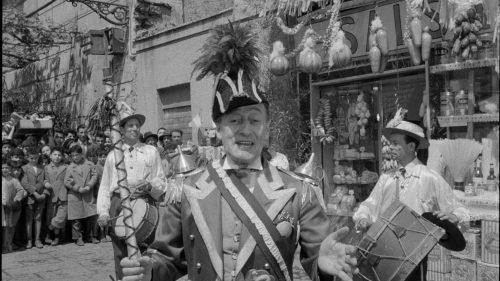Elzevir is an elegant font created in the seventeenth century, though in Italian journalism, the term acquired a second meaning, a literary essay that newspapers adopted following the lead of the Corriere della Sera, which started the practice in the year 1900. The Elzeviro could be the review of a play or the author’s reflections on current worldly events. The most prestigious Elzeviro authors were Emilio Cecchi, Dino Buzzati, Tommaso Landolfi, Eugenio Montale, Giuseppe Marotta, just to name a few. Elzeviro had to be brief, a couple columns at most.
In 1947 Giuseppe Marotta (Naples, 1902–1963) had his essays published as one book: L’oro di Napoli (lit. ‘the gold of Naples’). Born in poverty, Marotta’s short stories tell us about life on the streets with humour and some wit. We may say that he anticipated the commedia all’italiana that would make the fortune of Italian cinema in the following decades.
Thirty-six stories stories range, in genre, from memoir to witticism about known people – at least in the abstract – living in the slums of Naples. Raffaele Negro called his prose “an homage to Neapolitan theatricality”.

Between comedy and tragedy, with a strong emphasis on moral redemption, the duo Zavattini-De Sica draws on the collection of short stories by Giuseppe Marotta, which in turn revives masks and tragicomic situations from the Neapolitan sceneggiata, ...

L’oro di Napoli is, we’ll find out, the patience of Neapolitans as depicted in the episode Trent’anni, diconsi trenta (lit. ‘thirty years, I do mean thirty’) where protagonist Saverio Petrillo, a priest, tolerates a thirty-years house guest, a bossy, authoritarian former schoolmate who saved Saverio’s school year by helping him cheat on a final. But – says Marotta – “in everything about my hometown we’ll find the tail of the devil, darting and laughing”.
Marotta authored several screenplays, no less than eleven, including Soltanto un bacio (lit. ‘just a kiss’) of 1942 and Naked World of 1963.
L’oro di Napoli was also made into a mini-series and a feature film, The Gold of Naples, in 1954 (the hero year of Italian cinema, with 166 features produced) directed by Vittorio De Sica: six episodes inspired by ten of Marotta’s stories. A great many prime movie stars of Italian cinema participated in the making of the film: Totò, Eduardo De Filippo, Sophia Loren, Vittorio De Sica, Silvana Mangano, Tina Pica, Paolo Stoppa… for an incredibly good production. Wes Anderson commented: “An absolute masterpiece. Ever since I saw it… it will be my mission to tell everyone about it. Its comedy is so pure.My favourite episode is the one with Totò (the Saverio Petrillo we mentioned, ed.), who is the Italian Buster Keaton. I hope everyone around the world will see this film.”